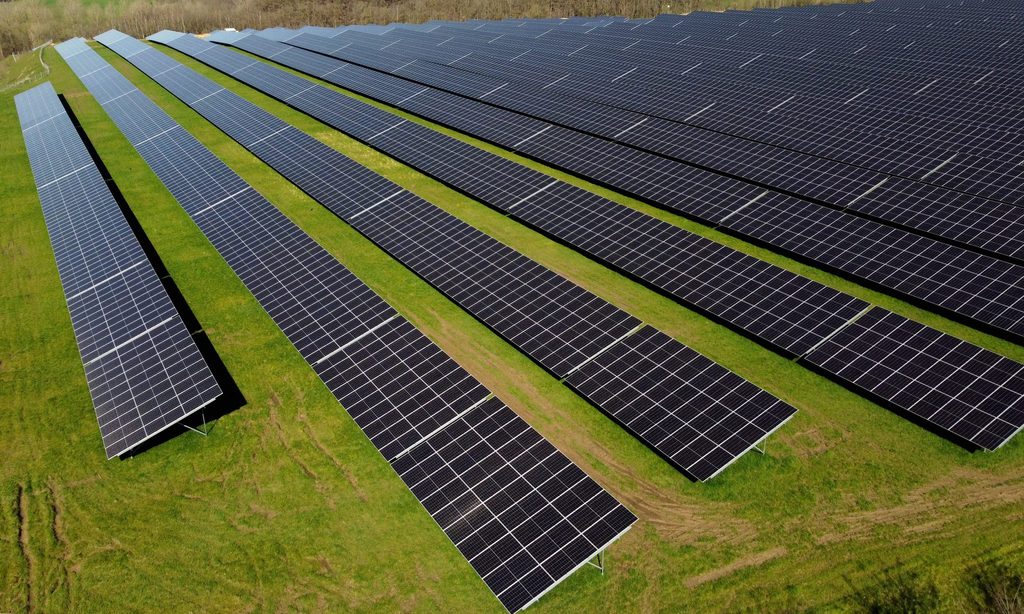The solar industry remains heavily reliant on products from China’s Xinjiang Region which is regularly implicated in the use of slave labour, new research by Sheffield Hallam University reveals.
Some of the world’s largest solar panel manufacturers likely use input extracted or processed in the Xinjiang Region with the use of ethnic Ughyurs, who are placed into so-called “re-education camps” by the Chinese Communist Party and forced into work camps. The CCP may be conducting “crimes against humanity” in the region, the UN warns.
Over-Exposed: Uyghur Region Exposure Assessment for Solar Industry Sourcing provides an in-depth analysis of the world’s 10 largest solar module manufacturers, documenting their alleged exposure to the Uyghur Region.
The area, which has a sizeable Muslim population, is now responsible for the production of around 35% of the world’s polysilicon and as much as 32% of global metallurgical-grade silicon production. These materials are commonly used in the production of solar panels.
The research concludes that the vast majority of solar panels produced globally continue to be exposed to potential slave labour in the region. Solar panel production in China exponentially increases the risk that component materials will come from slave labour.
In the US, Joe Biden’s Uyghur Forced Labour Prevention Act places new responsibility for companies to ensure that their products do not use materials that are tainted by slave labour from the region.
Yet alarmingly, some of the world’s largest solar module manufacturers appear to have bifurcated their supply chains to create a product line that they claim to be free of Xinjiang imports, especially for the US market, while still sourcing “tainted” materials for products intended for other markets.
Some claim to be completely free of Uyghur labour products, while continuing to source from exposed supply chains.
Slave labour
Of the 16 largest solar panel producers, just three companies likely do not source materials from the Xinjiang Region. Another four companies have "high exposure" while the majority (56%), have "very high" exposure to the possibility of using goods from slave labour.
'The findings of the report reveal the bogus excuses from solar companies that have resisted breaking their ties with the Uyghur Region," said Muetter Iliqud, Head of Communications for the Norwegian Uyghur Committee. "It is very possible to create alternative solar supply changes that do not rely on Uyghur forced labour, but globally the solar industry has been slow to end its complicity in the crimes committed against Uyghurs."
One of the authors of the report, Laura Murphy, Professor of Human Rights and Contemporary Slavery at the Helena Kennedy Centre for International Justice at Sheffield Hallam University, says that the findings of the report demonstrate government failures in ensuring slavery does not enter international supply chains.
"Governments that have not adopted bans on the import of forced labour-made goods run the risk of their countries becoming dumping grounds for solar panels made using Uyghur forced labour," she warned.
Related News
- 50 million people worldwide in modern slavery
- EU Commission proposes to keep forced labour products off the internal market
In an interview with The Brussels Times in September 2022, Chloe Cranston, Business and Human Rights Manager at Anti-Slavery International, and member of the Coalition to End Forced Labour in the Uyghur Region, said that the a lack of EU legislation means that slave-labour products, of all kind, are now widespread in Europe.
"A huge product that we use everyday could be made with modern slavery at some point," she said. In total, over 17 global industries, from renewables to toys, are implicated in this forced labour. Companies can often not be trusted to fully ensure the absence of these tainted materials.

